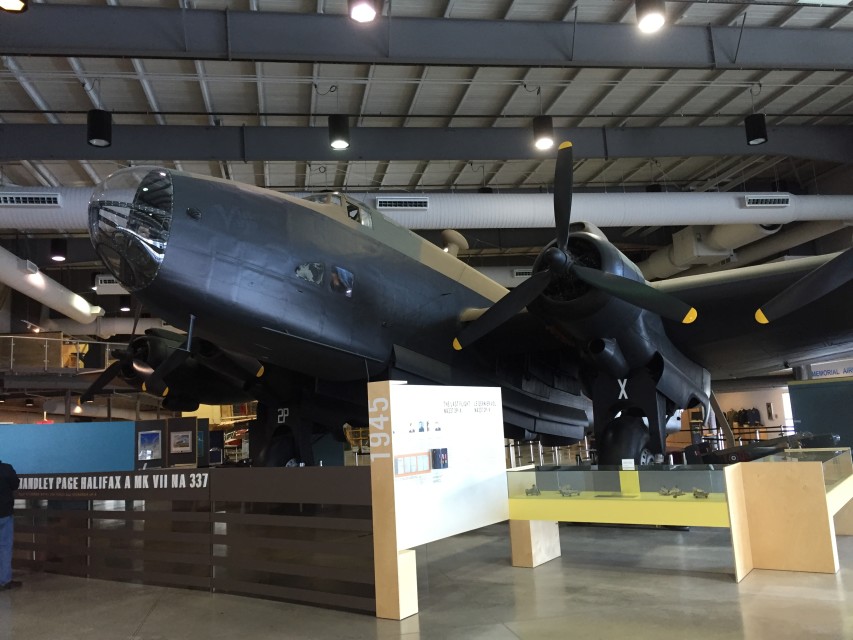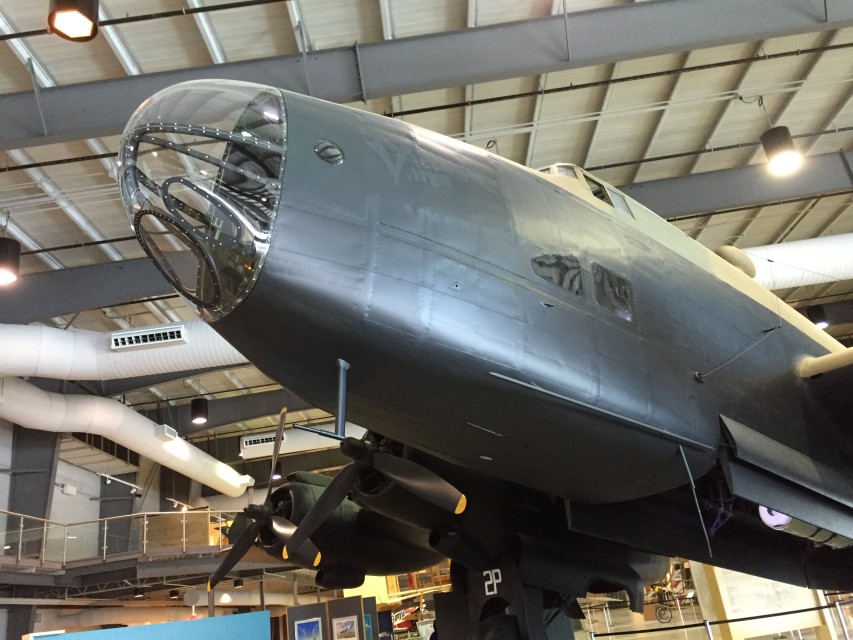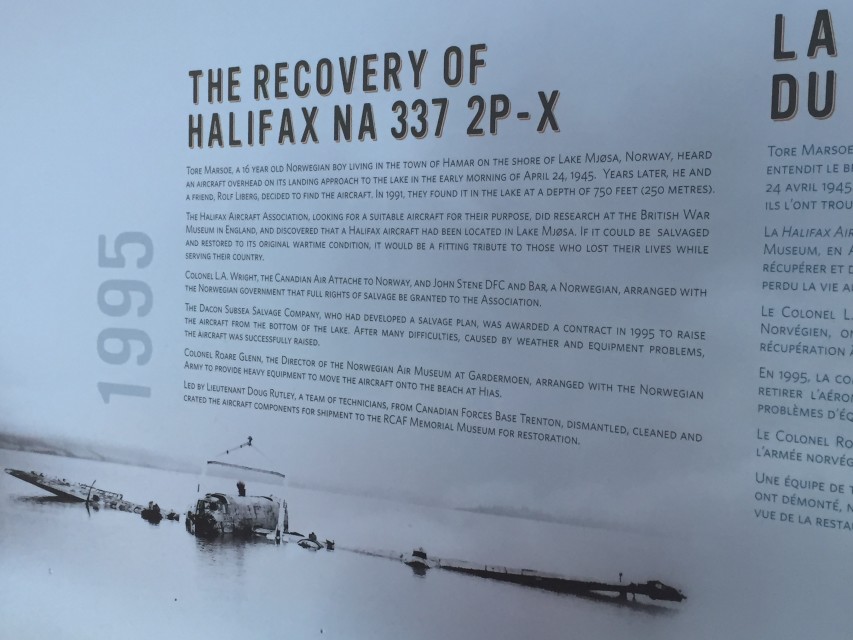 No matter how strong the Vikings may have appeared and how weak the Bears may have looked, when the Bears hosted the Vikings at Soldier Field, the outcome was always biased strongly in favour of the hosts. Since the 2000 NFL season, the Vikings had only won twice at Chicago, until yesterday. I didn’t get to watch this game, as Elizabeth and I were away for the weekend (but in an odd twist, Elizabeth watched a few minutes of the second quarter as the game was shown in the bistro in Trenton where we stopped for a late lunch).
No matter how strong the Vikings may have appeared and how weak the Bears may have looked, when the Bears hosted the Vikings at Soldier Field, the outcome was always biased strongly in favour of the hosts. Since the 2000 NFL season, the Vikings had only won twice at Chicago, until yesterday. I didn’t get to watch this game, as Elizabeth and I were away for the weekend (but in an odd twist, Elizabeth watched a few minutes of the second quarter as the game was shown in the bistro in Trenton where we stopped for a late lunch).
November 2, 2015
Vikings beat the Bears in Chicago for the first time since 2007
A different view of Macbeth
Anthony King looks at Macbeth as a PTSD sufferer:
Although the descriptions are graphic, Shakespeare’s play itself includes few on-stage battle scenes. Only at the very end does Macbeth actually fight on stage, a last stand in which he kills the young Siward (his last victim) and is in turn killed by MacDuff. For the rest of the play, all of Macbeth’s violence is set off stage, described but never seen. The audience imagines his violence — they do not witness it.
Justin Kurzel’s striking new adaptation of Macbeth, released on October 2, 2015 to critical acclaim and starring Marion Cotillard and Michael Fassbender, represents a cinematographic inversion of the original. In his film, battle predominates. The film begins with an extended combat sequence. Macbeth and his army are gathered on a bleak moor as they prepare for battle against Macdonaldwald’s army, unseen in the dense fog. The camera pans across the black-striped war-painted faces until, initiated by Macbeth, the host issues a war cry and plunges toward their enemies, who appear spectrally in the distance through the murk. In ultra-slow motion, the two armies clash and brutal fighting follows. Most notably, one of Macbeth’s boy soldiers, on whom the camera dwells tellingly before the battle, has his throat cut during the fighting and bleeds out darkly on screen. Eventually, Macbeth charges Macdonaldwald and slashes him to the ground. The scene is followed by a long sequence in which the dead are gathered and prepared for cremation, including the boy soldier, whose image haunts the rest of the film.
Macbeth’s apparently fearless heroism and remorseless violence is on display throughout these sequences. Yet the sequences highlight an aspect of Macbeth’s character normally absent from adaptations of the play and presumably from the original play, but highly relevant to a 21st-century audience. Macbeth is a combat veteran and, despite his courage, he is plainly severely traumatized by his war experiences. Kurzel and Fassbender construct him as a victim of PTSD, and he displays the classic symptoms of this perturbing condition.
The National Air Force Museum of Canada
Elizabeth and I spent the weekend in the Bay of Quinte area, visiting Prince Edward County, Belleville, and Trenton. While we were in Trenton, we stopped in at the National Air Force Museum of Canada. While the Sea King may not be in the collection yet (at least, not in the collection visible to the public), many other Canadian Armed Forces aircraft are, including the prize of the museum, the Handley Page Halifax heavy bomber:
It’s a big enough aircraft that it’s hard to do it justice in a photograph.
This particular restored aircraft was shot down late in the war on a mission to deliver supplies to Norwegian resistance fighters and later recovered from a Norwegian lake.
Other aircraft in the collection include a replica of the Silver Dart, the first powered aircraft to fly in Canada (February 23, 1909), a replica of the Burgess-Dunne floatplane, the first aircraft purchased for the Canadian military (September, 1914), a CF-86 Sabre, a CF-100 Canuck, a CF-5 Freedom Fighter, a CF-104 Starfighter, a CF-101 Voodoo, a CF-18 Hornet, a CP-107 Argus, a CC-130 Hercules, and a CP-102 Tracker among other aircraft.
The Top 10 Moustaches of World War 1 I THE GREAT WAR Top List
Published on 28 Oct 2015
Grow your own World War 1 moustache and send a picture to us on Facebook, Twitter or Instagram using the hashtag #TGWmovember. We will collect the best for an upcoming OUT OF THE TRENCHES.
November is the month of the year to celebrate moustaches and beards in all forms and fashions. To celebrate the start of #movember we made a new top list ranking the beards of World War 1.
QotD: The Imperial Roman army
Such were the arts of war, by which the Roman emperors defended their extensive conquests, and preserved a military spirit, at a time when every other virtue was oppressed by luxury and despotism. If, in the consideration of their armies, we pass from their discipline to their numbers, we shall not find it easy to define them with any tolerable accuracy. We may compute, however, that the legion, which was itself a body of six thousand eight hundred and thirty-one Romans, might, with its attendant auxiliaries, amount to about twelve thousand five hundred men. The peace establishment of Hadrian and his successors was composed of no less than thirty of these formidable brigades; and most probably formed a standing force of three hundred and seventy-five thousand men. Instead of being confined within the walls of fortified cities, which the Romans considered as the refuge of weakness or pusillanimity, the legions were encamped on the banks of the great rivers, and along the frontiers of the barbarians. As their stations, for the most part, remained fixed and permanent, we may venture to describe the distribution of the troops. Three legions were sufficient for Britain. The principal strength lay upon the Rhine and Danube, and consisted of sixteen legions, in the following proportions: two in the Lower, and three in the Upper Germany; one in Rhaetia, one in Noricum, four in Pannonia, three in Maesia, and two in Dacia. The defence of the Euphrates was intrusted to eight legions, six of whom were planted in Syria, and the other two in Cappadocia. With regard to Egypt, Africa, and Spain, as they were far removed from any important scene of war, a single legion maintained the domestic tranquillity of each of those great provinces. Even Italy was not left destitute of a military force. Above twenty thousand chosen soldiers, distinguished by the titles of City Cohorts and Praetorian Guards, watched over the safety of the monarch and the capital. As the authors of almost every revolution that distracted the empire, the Praetorians will, very soon, and very loudly, demand our attention; but, in their arms and institutions, we cannot find any circumstance which discriminated them from the legions, unless it were a more splendid appearance, and a less rigid discipline.
Edward Gibbon, “Chapter I: The Extent Of The Empire In The Age Of The Antonines — Part III”, History of the Decline and Fall of the Roman Empire, 1782.






